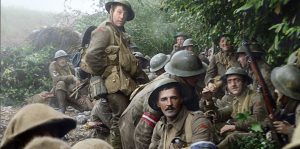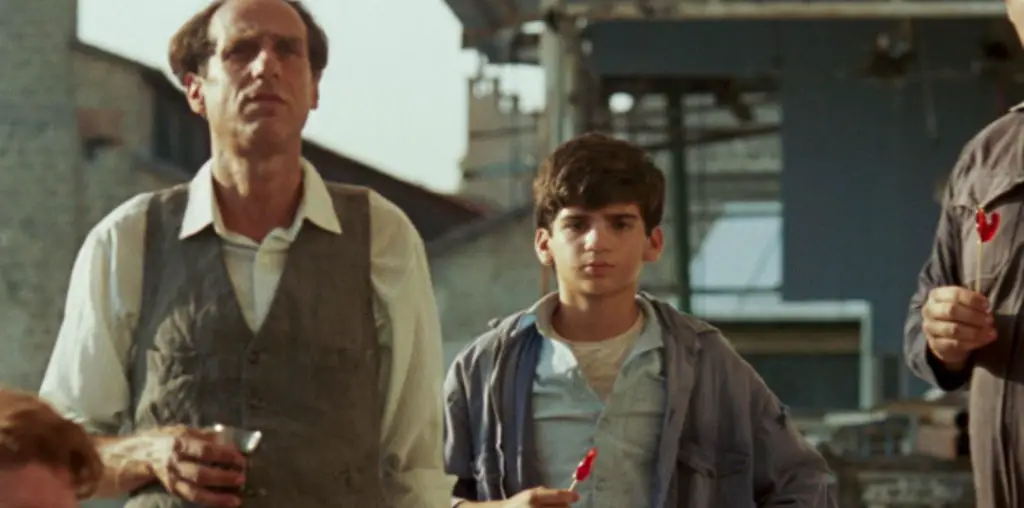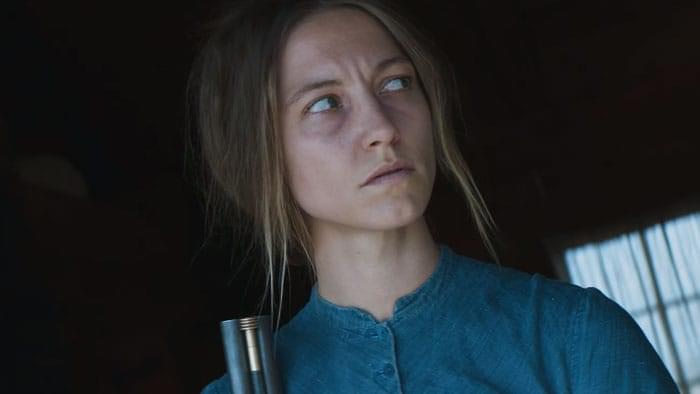
What happens when you give Lord of the Rings guru Peter Jackson hundreds of hours of World War I footage and ask him to pull together a documentary about the war? What that man does is clean it up, add color and sound, and translate it into 3D. But like Lord of the Rings, he does so with reverential love and attention to the source material.
In his documentary, They Shall Not Grow Old, Jackson tells the story of the brave men of England and their love of country in what was the first and should have been last world war. His restored footage is overlayed entirely with the testimonies of WWI veterans, who were there in the middle of it all. The story starts at the declaration of war in a time when the newspaper was the only form of mass communication.
In a time where patriotism to one’s country was a virtue, thousands of men immediately volunteered to join the war effort against Germany. If you’re watching the 3D version, the footage of recruitment and training is presented in restored 2D black and white. We go into the 3D color, once the troops step foot on the western front. Here Jackson takes us through the horrors of war, gaining a sense that these kids were just pawns in a game played by world leaders.
World War I was a new kind of war, because of its use of planes, tanks, and artillery for the first time. Add in the impossible conditions of trench warfare, where men lived in their own filth and alongside piles of decomposing dead comrades—all brought to you in glorious 3D. Even more haunting is the fact that this is real. These were real men fighting for their country and real men on the ground who died for that same country.

“…takes us through the horrors of war, gaining a sense that these kids were just pawns…”
No cameraman was crazy enough to film the actual battles. During the final campaign to defeat Germany, director Jackson uses illustrations found from his collection of old war. In fact, one reason Peter Jackson got this project was due to his lifelong fascination with WWI along with the number of memorabilia and artifacts he collected over time.
Two things go through your mind watching They Shall Not Grow Old. The first and most apparent is its historical value. A great deal of the footage Jackson presents had never been seen before, because merely restoring the old film was not possible with the technology of old. The work that Jackson’s crew put into this effort is admirable. On the other end, you can’t help but think about the guy standing in the middle of a war zone, cranking the camera and capturing a war live for the first time.
Secondly, there’s the amazement of what Jackson was able to produce. Let’s be clear, it’s not perfect, but it’s damn near close. I’ve been a Photoshop professional for some years and have attempted to restore and clean up old photos. It’s not easy, but I understand some of the process involved. Jackson had to reverse engineer the effects of film degradation, colorize the images, and add sound and audio. Forensic lip readers were employed to flesh out the actual dialogue. In one moment, a British officer is reading a message of encouragement to his troops, and somehow Jackson was able to find the exact printed speech.
It’s hard to truly grasp the meticulousness Jackson brought to the project. He’s driven to get everything perfect because as an audience, we subconsciously know when something is off. Filming WWI employed a man with a hand crank, which means the film speed varied from shot to shot. Jackson had to figure out that speed and upgrade it to our standard 24 frames-per-second.

“…it’s not perfect, but it’s damn near close.”
Also, you just can’t paint grass green. All sorts of factors including the natural light, shadows, how grass had worn down from the surrounding war, all this influences the precise shade of green for every single blade. Did that much detail need to go into coloring grass? Yes, because again subconsciously our mind would have noticed it.
This holds true for sounds as well. You can’t just go to a soundboard and press an artillery button to trigger an authentic sound. Great pains were taken to find actual artillery cannons that matched those used in WWI.
The final product is not perfect, but close enough for horseshoes. The hardest thing to fix was real faces, especially in close-up. It’s difficult to stabilize shaky images, and as noted before, your subconscious will tell you something’s off.
In high school, my Western Civilization teacher would show us movies like All Quiet on the Western Front (1979) and weirdly Oh! What a Lovely War (1969). He chose these films because he loved movies and quite frankly, the district didn’t have access to any good WWI docs. Well, now they do.

They Shall Not Grow Old (2018) Directed by Peter Jackson.
9 out of 10 stars



I thought the faces were the most successful part of the film (which I saw twice) because they needed no “fixing.” They provided a more intimate personal vie of war of any I have read or even. Especially powerful were the faces revisited when the subject was death, and we seemed to see old friends dying before our eyes.